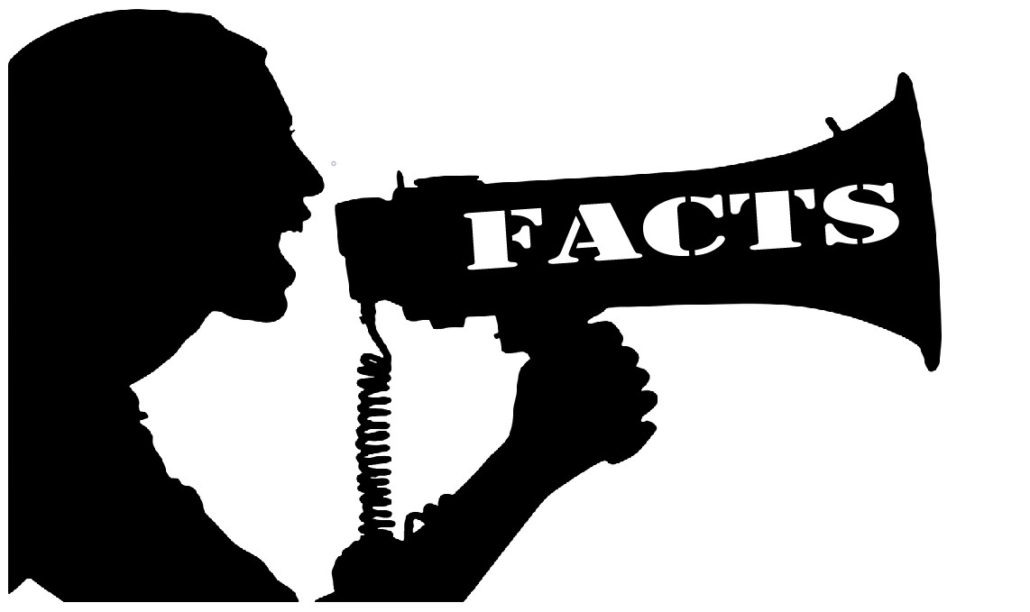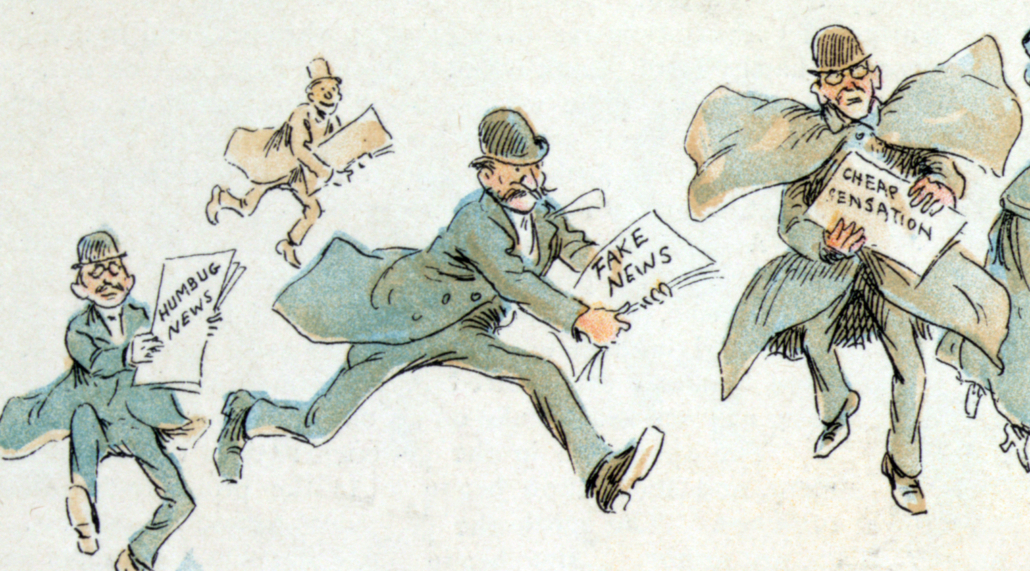ERIC’S TECH TALK: A primer for finding good information on the internet

 by Eric W. Austin
by Eric W. Austin
The world is filled with too much information. We are inundated with information during nearly every moment of every day. This is a problem because much of it is simply spin and misinformation, and it can be difficult to separate the quality information from the background noise that permeates the internet.
I think being successful in this endeavor comes down to two things: learning to discern the quality sources from the sketchy ones, and getting in the habit of viewing a variety of sources before leaping to conclusions.
Let’s deal with the first one: quality sources. How do you determine the good sources from the bad?
To visualize the problem we’re dealing with, imagine a perfect source as a dot in the middle of a blank page. This hypothetical source is unbiased and completely reliable. (There is, of course, no such source or I would simply recommend it to you and this would be a very short article.)
Now imagine each and every source on the internet as another dot on this page. The distance each source is from the center dot is an indication of greater bias and lower reliability.
Oh, but you might complain, this is such a highly subjective exercise! And you would be absolutely right. Judging the quality of information on the web is not a hard science; it is a skill you need to develop over time, but it is also a skill which has become more and more essential to life in the modern age.
As a part of this mental exercise it’s important to be aware of the subjective weaknesses inherent in the human condition that are likely to trip you up. For example, we are much more likely to judge sources which align with our existing views as less biased than those sources which do not. So, you need to compensate for that when drawing the mental picture that I described above.
When I was learning to drive, our driver’s education teacher emphasized the importance of looking at both side mirrors, the rearview mirror and glancing over my shoulder before making any move in traffic such as changing lanes. Why wasn’t it sufficient to rely on only a single method to judge the safety of an action before taking it? Because each method has a blind spot which can only be compensated for by employing more than one tactic prior to making a decision. Using overlapping sources of information decreases the chances of missing something important.
Judging information on the internet is kind of like that: no one method is going to be sufficient and each will have a particular blind spot which can only be counterbalanced by employing multiple solutions.
Certain online resources can help you with drawing a more accurate picture of the sources on which you rely. The website MediaBiasFactCheck.com assesses more than 3,600 websites and news sources for bias and credibility across the internet on both the right and the left. Allsides.com is another resource which rates the political bias of websites and often places news stories from the left and right side by side so you can see how specific information is being presented. Allsides also has a handy chart rating the bias of the most well-known news sources from across the political spectrum. I don’t always perfectly agree with the ratings these sites supply (and neither will you), but it is a good place to start and should be another tool in your information-analysis utility belt.
If you are confronted with a source you do not have any prior experience with, search for it using the above resources and also do a web search for the name of the website. There may be a Wikipedia page about it that will tell you where the site’s funding comes from and whether the site has been caught peddling false information in the past. A web search may also dig up stories by other news sources reporting on false information coming from that website. There is nothing news sources like better than calling out their rivals for shoddy reporting. Use that to your advantage.
If a web search for the site turns up nothing, that could be a warning signal of its own. On the internet, it is absurdly easy to throw up a website and fill it with canned content, interspersed with propaganda or conspiracy theories to draw internet clicks and advertising dollars. It is becoming increasingly common for politically motivated groups to create credible-looking news sites in order to push a specific ideological agenda, so look for sources with some history of credibility.
So, what about bias? Isn’t everything biased? Well, yes, which is why our unbiased and perfectly reliable source above is only hypothetical. The skill you must develop is in determining how far each source is from matching that hypothetical ideal, and then building a well-rounded collection of credible sources representing various points of view.
One thing that must be mentioned is that bias and credibility are not mutually exclusive. Although sources that are highly biased are also more likely to lack credibility, this is not necessarily a strict correlation. In determining the credibility of a source, bias is only one of the factors to consider.
Let’s take a look at two news sources on opposite sides of the political spectrum: Fox News and CNN.
Initially, you might be tempted to think these sources are the worst examples to use in a discussion of reliable sources because of their high level of bias, but I would like to argue the opposite. First, it is important to recognize the difference between news and opinion. Most large news organizations separate their news reporters from their opinion commentators. If a website does not make this difference very apparent to the consumer then that may not be a source you want to trust. Separating news from editorial content is a standard policy because bias is a well-known problem for most news organizations and separating these two areas is a safeguard against too much opinion bleeding into their news. Of course, this is not a perfect solution, but such a precaution is better than nothing, and smaller niche sites often do not have the resources or desire to make this distinction.
This does not mean that smaller niche sites cannot be valuable sources of information, especially if that information is of a sort in which the site specializes, but it is something to consider when evaluating the validity of information, especially about controversial topics.
Another reason to include several high profile news sites from both sides of the aisle in your list of sources is that any missteps by these organizations are less likely to escape notice than smaller niche news sites. You can bet CNN will be quick to pounce on any sort of shoddy reporting put out by Fox News and vice versa.
So, bias is not necessarily a bad thing. It is important that we have right-leaning news organizations to rigorously investigate left-leaning administrations, just as it’s important to have left-leaning news organizations to report on right-leaning administrations. That is the beautiful mess that is the American free press. Your best bulwark against bias is to have a diversity of credible sources at your disposal representing a wide range of viewpoints.
Remember that the best safeguard against our own biases is to seek out opposing opinions in order to constantly challenge our preconceptions and force ourselves to regularly reevaluate our conclusions. Nobody is right all the time, and most of us are wrong more often than we’d like to admit. Cognitive dissonance – that sense of discomfort we feel when encountering information which threatens to upend our carefully set up boundaries and views of the world – is not something to run from but to embrace. Finding out you are wrong is often the only way to discover what is right.
Eric W. Austin writes about local issues and technology. He can be reached at ericwaustin@gmail.com.
Responsible journalism is hard work!
It is also expensive!
If you enjoy reading The Town Line and the good news we bring you each week, would you consider a donation to help us continue the work we’re doing?
The Town Line is a 501(c)(3) nonprofit private foundation, and all donations are tax deductible under the Internal Revenue Service code.
To help, please visit our online donation page or mail a check payable to The Town Line, PO Box 89, South China, ME 04358. Your contribution is appreciated!


Leave a Reply
Want to join the discussion?Feel free to contribute!